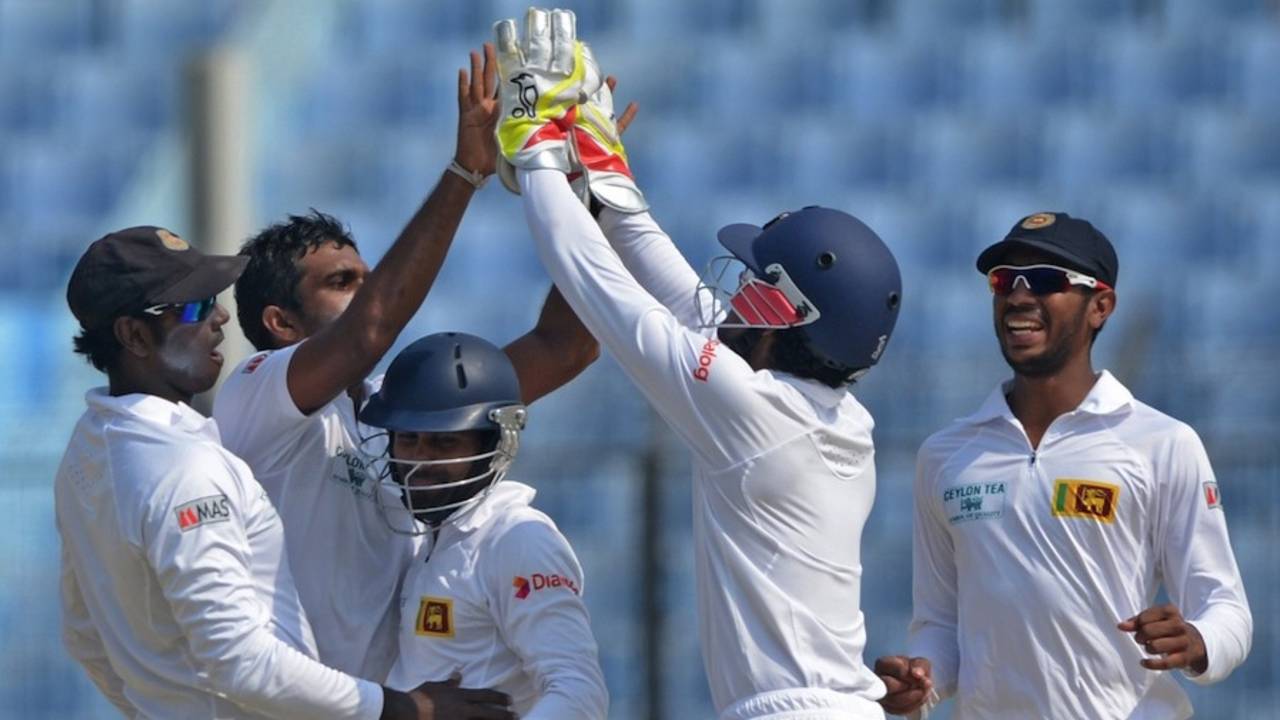Sri Lanka are well into their tour of England and Ireland, but the real meat of the tour is yet to start. On June 12, Sri Lanka will play England at Lord's in the first match of that latter-day abomination, a two-Test series.
Sri Lanka suffered the indignity of desultory single-Test tours for almost 20 years, before the ECB deigned to grant them a Test series in 2002, six years after Sri Lanka had thrashed England on their way to winning the World Cup. For a brief period Sri Lanka played three-match Test series against England, a format that allows a narrative between the two teams to develop, and, more often than not, leaves a clear victor. But, regrettably, the hideous compromise of the two-Test series seems to have become firmly established, a victim of the rise of the T20 game and the bottom line.
Given the long struggle to attain Test status - and no country had to wait as long for the honour as Sri Lanka - the demotion of Test cricket to an inconvenient sideshow is particularly galling. Truth be told, Sri Lanka have played Tests so infrequently of late, it could reasonably be asked whether they deserve to be called a Test nation at all. In 2013, Sri Lanka played a total of
three full Test matches. Let me repeat that. The national side played a grand total of 14 days of Test cricket in the entire calendar year. It is as embarrassing as it is pitiful.
The paucity of Test cricket has obvious ramifications for the experience of younger players. The last Test Sri Lanka played was
in Chittagong in February this year. The total number of Test caps in the Sri Lankan team that day was 384. The total number of caps in the England side in their last match, the
fifth Test of the disastrous Ashes series, was close to 500, and that in a team with three debutants. That difference in experience might not sound overwhelming, but the most superficial of explorations reveals a far grimmer picture.
The national side played a grand total of 14 days of Test cricket in 2013. It is as embarrassing as it is pitiful
Nine of that Sri Lankan team mustered a total of 119 caps, three fewer than
Kumar Sangakkara's individual tally. Between them, Sangakkara and
Mahela Jayawardene accounted for 265 of those 384 caps, just under 70% of the total. When Jayawardene and Sangakkara retire from the Test arena, they won't just leave a hole in the Sri Lankan team, they'll leave a chasm as vast as the Mariana Trench.
The two openers in that Bangladesh Test were Dimuth Karunaratne, 26, and Kaushal Silva, 28. Hardly in the first flush of youth, but with a reasonable shelf life in front of them, their Test careers are approximately three years old. They have played 11 and eight Test matches respectively. At the same stage of their careers, three years in, Sangakkara had played
30 Tests, and Jayawardene had
played 23. The two men most likely to replace these giants are Dinesh Chandimal and Lahiru Thirimanne, who have played 12 and ten Tests respectively, and are also about three years into their Test careers. Of today's generation of players, only the captain Angelo Mathews has had meaningful Test exposure.
Nor are the bowlers faring any better.
Nuwan Kulasekara, the leader of the attack in the Test format, has a paltry 20 Tests, which exceeds the number of Tests Ajantha Mendis, Suranga Lakmal, and Nuwan Pradeep have played. Rangana Herath has a respectable 51 Tests to his name, all the more impressive given he played second fiddle to Muttiah Muralitharan for much of his career, but his career must also be in its final throes.
Sri Lanka, of course, are not the only team suffering from this malady. The fine words spoken about the five-day game being the pinnacle of cricket, the format in which the best players want to test themselves and secure their places in history, have not been matched with action to support Test cricket. Look at the names of the
highest run-accumulators in the game. Sachin Tendulkar, Rahul Dravid, Ricky Ponting, Brian Lara, Jacques Kallis. Of the top ten, only Chanderpaul, Jayawardene and Sangakkara are still playing. Let your eyes wander down that list. Who will break into the top ten, the top 20? Michael Clarke, perhaps, although given his dodgy back that is questionable. Alastair Cook may beat them all, but it is hard to see who else could.
That list is dominated by players whose careers flourished in the '80s, '90s, and 2000s. Virat Kohli, the standard bearer for his generation of batsmen, is unlikely to play enough Tests to force his way into that group. It would be unutterably sad if the list of Test elite were to be fossilised over the next few years. If men with triple-hundreds and ten-wicket hauls become behemoths of a past era, existing only in our memories, that might prove to be an extinction-level event for cricket.
